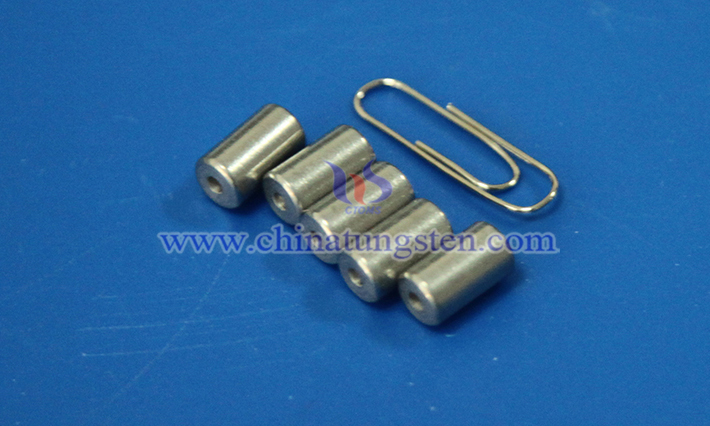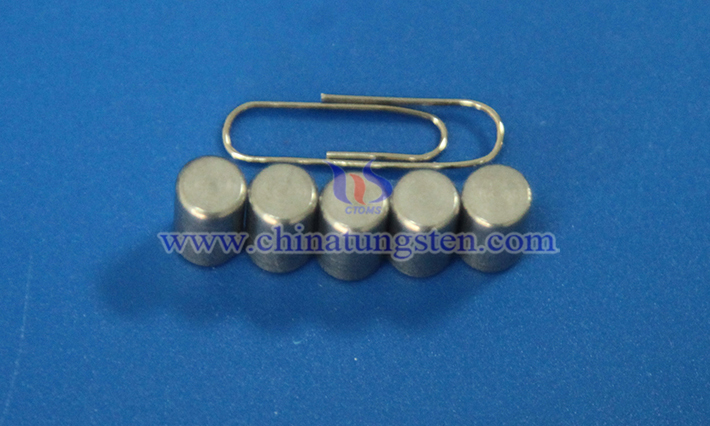Barium Tungsten Electrodes for Hot Cathode Electron Tubes
- Details
- Category: Tungsten Information
- Published on Thursday, 24 April 2025 17:04
Barium tungsten electrodes are critical materials in hot cathode electron tubes. Their unique physical and chemical properties make them a preferred solution in the field of electron emission, with extensive applications, particularly indispensable in special lighting sources and high-performance electronic devices.

I. Material Properties of Barium Tungsten Electrodes
1. Low Work Function
The work function of barium tungsten electrodes is only 1.6 eV, significantly reducing the energy required for electron emission and enabling efficient electron emission at lower temperatures.
2. High Current Density
Supports a current density of 10 A/cm², far exceeding that of pure tungsten electrodes, making them suitable for high-power electron tubes.
3. High Temperature Resistance and Stability
With a melting point of tungsten matrix as high as 3422℃ and combined with the activity of barium, the electrodes can operate stably at around 1000℃, balancing high-temperature resistance and thermal shock resistance.
4. Poisoning Resistance and Bombardment Resistance
Barium tungsten electrodes have strong resistance to residual gases and ion bombardment, and their surface is not easily degraded by contamination or impact.
II. Application Advantages of Barium Tungsten Electrodes in Hot Cathode Electron Tubes
1. Efficient Electron Emission
The low work function makes it easier for electrons to escape from the surface, with an emission efficiency 6-20 times that of pure tungsten (emitting 60-200 mA per watt of power), significantly reducing energy consumption.
2. Long Lifetime and Stability
Reserved barium tungsten cathodes (containing tungsten sponge) can replenish evaporated barium atoms, with a lifetime ranging from 1 million to 5 million times (depending on the application scenario), suitable for high-frequency flash devices.
3. Wide Operating Temperature Range
They can still operate at low temperatures (e.g., 800℃) and significantly increase current density at high temperatures (1100℃), providing flexibility to adapt to different needs.
4. Environmental Interference Resistance
They have lower requirements on vacuum degree, and the surface can be further reduced in work function and enhanced in emission uniformity by covering with osmium-iridium film.

III. Role in Hot Cathode Electron Tubes
1. Electron Emission Source
As a thermionic cathode, it releases electrons upon heating to form an electron current. The low work function of barium tungsten electrodes allows electron tubes to start at lower temperatures, reducing warm-up time.
2. Stability Assurance
The uniform porous tungsten matrix ensures continuous electron emission and avoids performance degradation caused by local overheating.
3. High Voltage Adaptability
It can withstand the bombardment of positive ions generated by high screen voltage, suitable for high-power transmitting tubes (e.g., broadcasting transmitting tubes, industrial heating tubes).
IV. Typical Application Scenarios
1. High-Intensity Discharge Lamps (HID Lamps)
Advantages: Rapid ignition, high luminous efficiency, replacing traditional mercury lamps with a lifetime exceeding 10,000 hours.
Cases: Road lighting, industrial searchlights.
2. Electrovacuum Devices
Laser Pumping: Provides a stable electron source to enhance laser efficiency.
Magnetrons: Supports high-power output for radar and communication fields.
3. Stage and Film Equipment
Strobe Lights: Start-up voltage as low as 70% of mains voltage, brightness increased by 15%, supporting 1-40 flashes per second.
Xenon Lamps: Low-voltage triggering, suitable for high-speed photography and fill light equipment.
4. Special Lighting Sources
Medical Positioning Lamps: Long lifetime and high stability meet the needs of medical equipment.
Military Strobe: Resistant to extreme environments, supporting tactical lighting.
- Chinatungsten Online: www.tungsten.com.cn
- CTIA GROUP LTD: en.ctia.group
- Tungsten News & Price: www.ctia.com.cn
- Molybdenum News & Price: news.molybdenum.com.cn
- Tel.: 86 592 5129696; Email: sales@chinatungsten.com